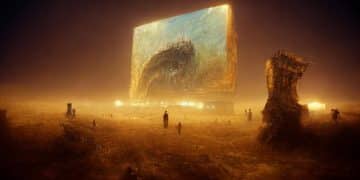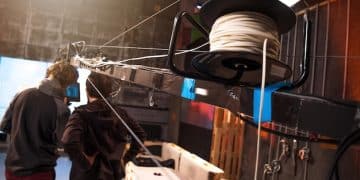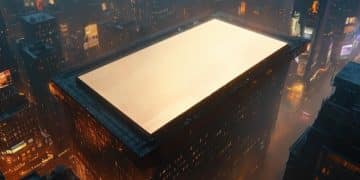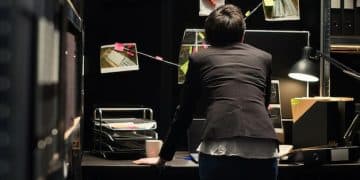Is CGI Overused? Examining Visual Effects in Recent Blockbusters

CGI’s pervasive use in recent blockbusters like “Aquaman and the Lost Kingdom,” “The Flash,” and “Napoleon” prompts a debate on whether its overuse detracts from storytelling, affecting audience immersion and appreciation for practical effects.
Has CGI taken over Hollywood? Recent blockbusters have been dazzling audiences with spectacular visuals, but is the use of CGI overused? Examining the visual effects in 3 recent blockbusters raises questions about whether this technology is enhancing storytelling or overshadowing it.
The Rise of CGI in Modern Cinema
Computer-Generated Imagery (CGI) has revolutionized filmmaking, providing filmmakers with tools previously beyond imagination. From sprawling landscapes to fantastical creatures, CGI has become a staple in modern cinema. But how much is too much?
The evolution of visual effects has undeniable benefits. CGI allows filmmakers to create worlds and characters that would be impossible to realize with practical effects alone. The scale and complexity of modern blockbusters often necessitate the use of CGI to bring ambitious visions to life.
Benefits of CGI in Filmmaking
CGI offers unparalleled flexibility and control over the visual elements of a film. It allows for the creation of seamless effects, corrections, and enhancements that can significantly improve the final product.
- Cost-Effectiveness: In certain scenarios, CGI can be more cost-effective than practical effects, especially for complex or large-scale visuals.
- Creative Freedom: CGI provides filmmakers with almost unlimited creative freedom, allowing them to bring any vision to the screen.
- Safety: Stunt work and hazardous scenes can be safely replicated using CGI, reducing risks to actors and crew.
However, the increasing reliance on CGI raises concerns about potential drawbacks. Some critics argue that overuse can lead to a lack of realism and a detachment from the tangible elements that ground a film. This debate is at the forefront when examining recent big-budget releases.
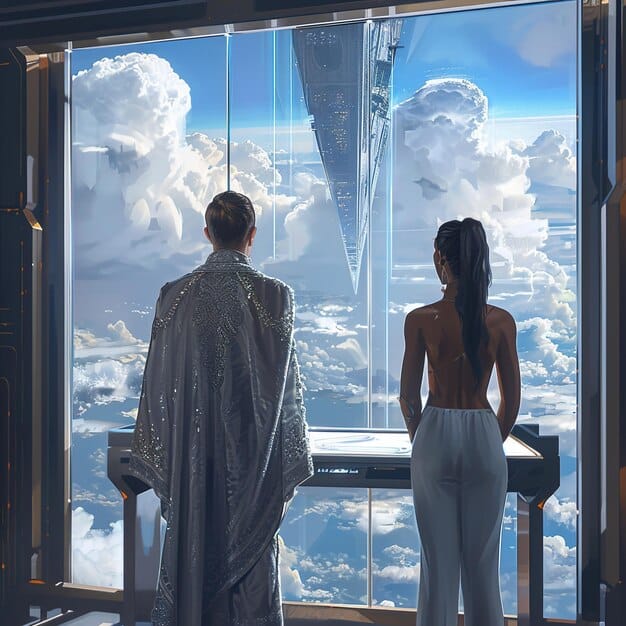
“Aquaman and the Lost Kingdom”: Drowning in CGI?
“Aquaman and the Lost Kingdom,” the sequel to the 2018 hit, delivers a visually stunning underwater world. However, some viewers have questioned if the film’s reliance on CGI detracts from its overall impact.
While the original “Aquaman” balanced practical effects with CGI, “The Lost Kingdom” appears to lean heavily on computer-generated visuals. This shift has led to discussions about whether the film’s aesthetic feels overly artificial.
Strengths and Weaknesses of CGI in “Aquaman 2”
The CGI in “Aquaman and the Lost Kingdom” undoubtedly creates breathtaking underwater environments and fantastical creatures. The sheer scale and detail of these visuals are impressive.
- Visual Spectacle: CGI enhances the scale and grandeur of the underwater world, creating visually stunning sequences.
- Seamless Integration: The digital effects blend relatively well, maintaining a consistent visual style.
- Creature Design: CGI brings to life a variety of imaginative sea creatures, adding to the film’s fantastical elements.
However, the film’s dependence on CGI also presents weaknesses. Some scenes lack a sense of physical presence, making the action feel less impactful. Critics have noted that certain sequences appear weightless and detached from reality.
Ultimately, “Aquaman and the Lost Kingdom” showcases both the strengths and weaknesses of CGI. While it creates a visually impressive world, the overuse might detract from the film’s emotional core and grounding.
“The Flash”: A Speedster’s Visual Dilemma
“The Flash” promised to be a groundbreaking superhero film, exploring the multiverse and featuring a plethora of visual effects. Yet, the film’s CGI has been a point of contention, with many criticizing its quality and overuse.
The film’s ambition to depict multiple realities and time-altering sequences necessitated extensive CGI work. Unfortunately, the execution didn’t always meet expectations, leading to a mixed reception.
Issues with CGI Quality in “The Flash”
One of the primary criticisms of “The Flash” is the inconsistent quality of its CGI. Certain scenes appear unfinished or poorly rendered, which detracts from the film’s overall visual appeal.
- Unconvincing Character Models: Some digital character models, particularly in action sequences, look artificial and unconvincing.
- Inconsistent Visual Style: The quality of CGI varies throughout the film, creating an uneven visual experience.
- Distracting Visuals: The excessive use of CGI, particularly in scenes involving time manipulation, can be visually overwhelming and distracting.
The rushed production schedule and multiple reshoots may have contributed to the uneven quality of the CGI in “The Flash.” Despite its narrative ambitions, the film’s visual effects ultimately fell short of expectations.
Despite shortcomings, the movie showcases a variety of visually complicated renders, such as time travel and multiverse travel, and even features more complicated scenes such as body manipulation, which can be seen in the many versions of The Flash himself in the movie. However, there is a strong argument that the quantity of CGI used in creating these scenes ended up sacrificing the quality of the final render.
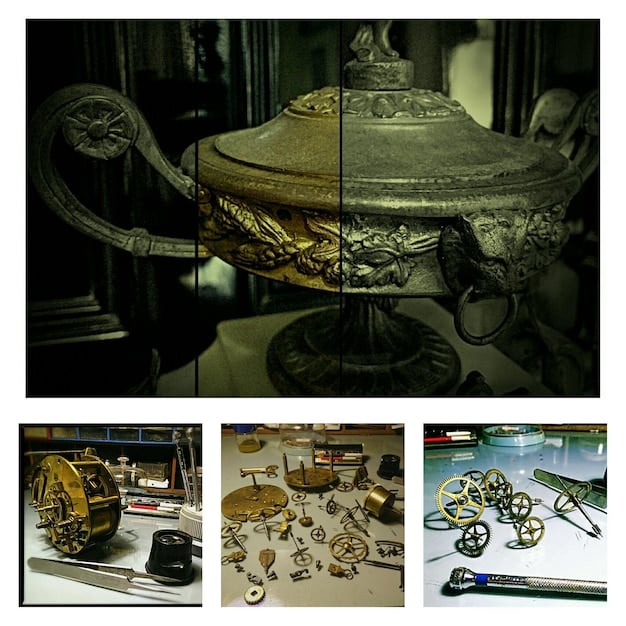
“Napoleon”: Historical Epic Enhanced or Overshadowed?
Ridley Scott’s “Napoleon” aimed to provide a sweeping historical epic, recreating iconic battles and moments from the French emperor’s life. While the film boasts impressive visuals, the use of CGI in “Napoleon” warrants examination.
Given the scale and scope of “Napoleon,” CGI played a crucial role in recreating historical battles and environments. However, the question remains whether its implementation enhanced the film or detracted from its authenticity.
Balancing Historical Accuracy with CGI Spectacle
One of the challenges in historical epics is striking a balance between historical accuracy and visual spectacle. While CGI can recreate vast armies and battlefields, it must be used judiciously to maintain a sense of realism.
- Battle Recreations: CGI effectively recreates large-scale battles, providing a sense of the historical context and scale.
- Environmental Enhancements: Digital effects enhance landscapes and environments, adding to the film’s visual grandeur.
- Costume and Prop Detail: CGI allows for intricate details in costumes and props, enhancing the film’s historical accuracy.
However, the overuse of CGI in “Napoleon” has been criticized for creating a sense of artificiality. Some viewers have argued that the film’s visual effects lack the tactile quality and weight of practical effects, diminishing the impact of its historical storytelling.
Although the argument can be made that practical effects would not be possible for such a large scale movie, the overuse of CGI can be distracting, and take the awe factor away from the beauty of the historical settings and well choreographed battles.
The Impact on Audience Immersion
The effectiveness of visual effects ultimately depends on their ability to enhance audience immersion. When CGI is well-executed and seamlessly integrated, it can transport viewers into the world of the film. However, when it’s overused or poorly rendered, it can break the illusion and detract from the viewing experience.
The goal of any visual effect is to serve the story and enhance emotional engagement. When CGI becomes the primary focus, it can overshadow the narrative and diminish the impact of the characters and their journeys.
Factors Affecting Audience Immersion
Several factors can influence the effectiveness of CGI in maintaining audience immersion. Quality of rendering, integration with practical effects, and overall visual style all contribute to the viewing experience.
The quality of rendering is perhaps the most crucial factor. If CGI looks artificial or unfinished, it can be distracting and take viewers out of the film. Seamless integration with practical effects is also essential for creating a sense of realism.
The rise in use of CGI also comes with the decrease in use of practical effects. The use of CGI in these huge blockbusters also comes with its own style and unique look, which can be visually unappealing to some.
The Future of Visual Effects
The debate over the use of CGI raises broader questions about the future of visual effects in cinema. As technology continues to evolve, the line between CGI and reality will likely blur further. However, the key to effective visual effects will always be their ability to serve the story and enhance audience engagement.
Filmmakers must strive to find a balance between CGI and practical effects, utilizing each tool to its full potential. The goal should be to create visuals that enhance the narrative without overshadowing it.
Trends in Visual Effects Technology
Several emerging technologies are shaping the future of visual effects, including real-time rendering, virtual production, and artificial intelligence. These tools promise to make CGI more efficient, realistic, and integrated into the filmmaking process.
- Real-Time Rendering: Allows filmmakers to see the final results of CGI in real-time, streamlining production and enhancing collaboration.
- Virtual Production: Integrates CGI into the live-action shooting process, creating a more immersive and interactive environment for actors and crew.
- Artificial Intelligence: AI-powered tools can automate certain tasks in CGI production, such as motion capture and texture creation, reducing costs and improving efficiency.
As these technologies continue to mature, they have the potential to revolutionize the way visual effects are created and utilized in cinema. The ultimate goal is to enhance storytelling and audience immersion, ensuring that visual effects serve the narrative rather than detract from it.
Finding the Right Balance
Ultimately, the question of whether CGI is overused is subjective. However, examining recent blockbusters highlights the importance of finding the right balance between CGI and practical effects.
When used judiciously, CGI can enhance storytelling and transport audiences to unimaginable worlds. However, when overused or poorly executed, it can detract from the viewing experience and diminish the impact of the film.
It can be concluded that an ideal movie contains both CGI and practical effects, to allow for moments of awe and shock, and times when the audience can connect with the movie on a more realistic level, allowing them to truly be absorbed in the plot.
| Key Point | Brief Description |
|---|---|
| ✨ CGI Benefits | Offers flexibility, creative freedom, and can be cost-effective. |
| 🙁 CGI Drawbacks | Overuse can detract from realism and emotional impact. |
| ⚖️ Finding Balance | Judicious use enhances storytelling; overuse overshadows it. |
| 🎬 Case Studies | “Aquaman 2,” “The Flash,” and “Napoleon” exemplify CGI’s strengths and weaknesses. |
Frequently Asked Questions
▼
CGI, or Computer-Generated Imagery, involves creating visual effects using computer software. It’s used to generate realistic or fantastical elements, from environments to characters, enhancing or replacing practical effects in movies.
▼
CGI offers cost-effectiveness, creative freedom, and safety advantages over practical effects, making it appealing for large-scale scenes and fantastical elements, often required in blockbuster productions.
▼
Overusing CGI can lead to a lack of realism, reduced audience immersion, and diminished impact on the storytelling. Scenes may appear artificial, detracting from the film’s emotional core.
▼
Filmmakers must combine CGI and practical effects, ensuring visual effects serve the narrative rather than overshadow it, emphasizing seamless integration and high rendering quality.
▼
Real-time rendering, virtual production, and AI-powered tools are revolutionizing CGI. These technologies promise efficient, realistic, integrated visual effects, to enhance storytelling and audience engagement.
Conclusion
In conclusion, the debate on whether CGI is overused in blockbusters continues, yet one can reach the consensus that balance is key. While CGI offers unmatched creative possibilities, overuse can detract from the realism and emotional depth of a film. The ideal approach lies in blending CGI seamlessly with practical effects to enhance the narrative and immerse audiences fully in the cinematic experience.
